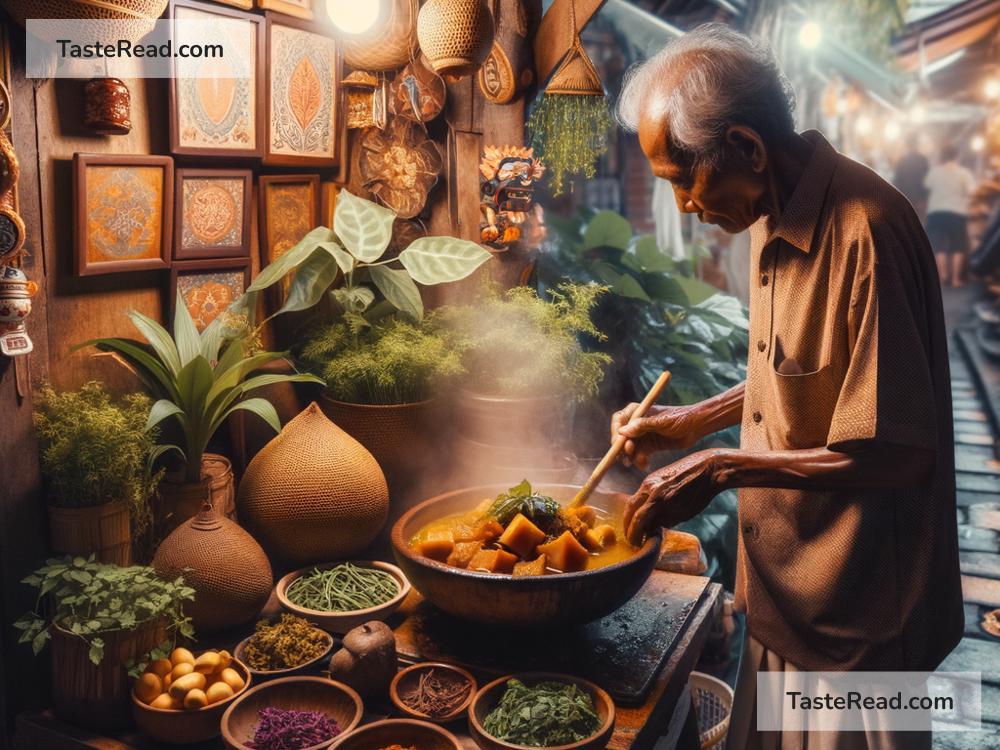Discovering Path-breaking Vegan Rendang in Indonesia
Indonesia, a nation of rich cultural heritage and diverse cuisines, is home to one of the most beloved dishes in Southeast Asia: rendang. Traditionally made with tender chunks of beef, coconut milk, and an aromatic blend of spices, rendang is a slow-cooked stew that’s deeply flavorful, velvety, and synonymous with Indonesian culture. This dish, originating from the Minangkabau ethnic group in West Sumatra, is often regarded as one of the tastiest foods in the world.
But what if we told you that rendang, traditionally thought of as a meat-based dish, could be recreated as a vegan masterpiece without losing any of its bold flavors? Enter Indonesia’s innovative vegan rendang — a true game-changer for plant-based eaters and foodies alike.
Vegan Rendang: A Modern Twist on Tradition
For years, rendang has been celebrated as a comforting dish brimming with textures and layers of spice. Its main ingredient—beef—acted as the centerpiece of the dish, soaking up the thick, rich coconut curry sauce and delivering a satisfying bite. However, with the rise of veganism and more people exploring plant-based alternatives, chefs across Indonesia have started experimenting with rendang, swapping out the beef for plant-based ingredients that celebrate the flavors and essence of the dish in new and exciting ways.
These vegan rendang creations use versatile ingredients like jackfruit, mushrooms, tempeh, tofu, or even plant-based meat substitutes, all of which are readily available in Indonesia. While the protein base may change, the soul of rendang remains: the cooking process is still slow and deliberate, allowing the spices and coconut milk to marry and create the deep umami flavor that rendang is famous for.
What’s in Vegan Rendang?
The magic of rendang lies in its spices. Whether it’s traditional or vegan, the dish relies heavily on a combination of fresh ingredients such as garlic, shallots, ginger, galangal, turmeric, lemongrass, and chili peppers. These are blended and cooked into a paste, then simmered in coconut milk with lime leaves, cinnamon, star anise, and other spices for hours.
In vegan rendang iterations, jackfruit is a particularly popular ingredient used to replace meat. Young jackfruit has a flaky texture and a neutral flavor that absorbs the spiced coconut sauce beautifully. Likewise, mushrooms (e.g., oyster or shiitake mushrooms) bring a hearty, chewy bite and enhance the dish with their natural umami. Tempeh and tofu, staples in Indonesian cooking, are protein-packed and add a satisfying texture to the vegan rendang.
Why Vegan Rendang Matters
The introduction of vegan rendang is significant for a number of reasons, especially in a country that values its meat-based culinary heritage. Vegan rendang represents a bridge between tradition and innovation, showing that classic dishes can adapt to meet modern-day needs while retaining their authenticity.
-
Health Benefits: Plant-based eating is known to support better health, including improved heart function, better digestion, and lower cholesterol levels. Vegan rendang allows people to enjoy the flavors of this iconic dish without the heaviness of red meat.
-
Sustainability: With global concerns about environmental impact, vegan rendang proves that incredible dishes can be made using eco-friendly alternatives. Replacing animal-based ingredients with plants significantly reduces carbon emissions and water usage.
-
Inclusivity: Vegan rendang makes this traditional dish accessible to more people, including vegans, vegetarians, and those with dietary restrictions. It’s a way of respecting Indonesia’s cultural roots while welcoming culinary diversity.
-
Creativity: Chefs and home cooks have taken rendang to new levels through plant-based experimentation. These creative recipes honor the fundamentals of rendang while celebrating the versatility of plant-based cooking.
Discovering Vegan Rendang in Indonesia
If you’re traveling through Indonesia, you’ll find an emerging wave of restaurants and street food vendors that offer vegan rendang alongside traditional options. Cities like Jakarta and Bali, known for their vibrant food scenes, are perfect places to start your journey. In Bali, for instance, vegan cafes showcase rendang made with jackfruit or tempeh, bringing a modern flair to this traditional delight.
Meanwhile, many home cooks across Indonesia are embracing vegan rendang, sharing recipes online and encouraging others to experiment with plant-based alternatives in their own kitchens. With the dish gaining international attention, you can even find video tutorials teaching you how to make it at home, using ingredients that are widely available outside of Indonesia.
How to Cook Vegan Rendang at Home
For those wanting to try vegan rendang at home, it’s simpler than you might think. All you need are plant-based alternatives (like jackfruit, mushrooms, tempeh, or tofu), a blender for your spice paste, and the patience to let the dish simmer for at least an hour. Some specialty ingredients like galangal (Indonesian ginger), lime leaves, and coconut milk may require a trip to an Asian grocery store, but the effort is well worth it.
Once you make your spice paste, combine it with coconut milk and let your chosen plant-based ingredient absorb the flavors. Serve your vegan rendang with steamed rice, garnished with fried shallots, and enjoy a meal that’s both comforting and exciting.
The Future of Rendang
Vegan rendang is not just a new take on a classic dish; it’s a symbol of Indonesia’s culinary evolution. As the world embraces different dietary preferences and prioritizes sustainability, Indonesia’s chefs and home cooks are leading the way by reimagining traditional dishes like rendang.
Whether you’re a meat-lover or a vegan adventurer, trying vegan rendang is a must. It’s proof that a dish tied deeply to tradition can evolve while staying true to its roots. So the next time you explore Indonesian cuisine, don’t miss the chance to savor this path-breaking vegan rendition — it’s tradition with a twist that you’ll remember forever.


